
Ceratomia undulosa, the waved sphinx, is a moth of the family Sphingidae. The species was first described by Francis Walker in 1856. Also known as the "Scorpion Moth".

Cocytius antaeus, the giant sphinx, is a moth of the family Sphingidae. The species was first described by Dru Drury in 1773.
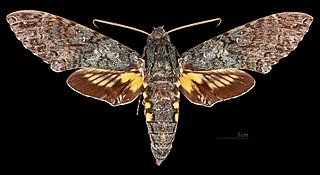
Amphonyx duponchel, or Duponchel's sphinx, is a moth of the family Sphingidae. The species was first described by Felipe Poey in 1832.

Manduca occulta, the occult sphinx, is a moth of the family Sphingidae.

Eumorpha labruscae, the gaudy sphinx, is a moth in the family Sphingidae.

Smerinthus jamaicensis, the twin-spotted sphinx, is a moth of the family Sphingidae. The species was first described by Dru Drury in 1773.

Amorpha juglandis, the walnut sphinx, is the only species in the monotypic moth genus Amorpha, which is in the family Sphingidae, erected by Jacob Hübner in 1809. The species was first described by James Edward Smith in 1797.
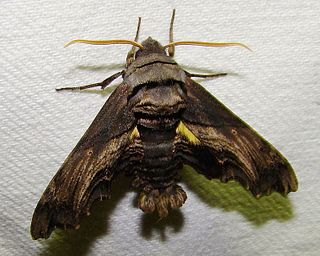
Sphecodina abbottii, or Abbott's sphinx, is a moth of the family Sphingidae. The species was first described by William John Swainson in 1821.
Pachysphinx modesta, the modest sphinx or poplar sphinx, is a moth of the family Sphingidae. The species was first described by Thaddeus William Harris in 1839.
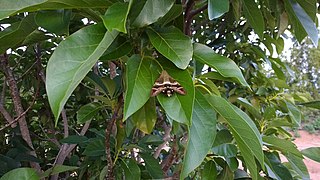
Aellopos fadus, the Fadus sphinx, is a moth of the family Sphingidae. The species was first described by Pieter Cramer in 1776.

Aellopos titan, the Titan sphinx, is a moth of the family Sphingidae. The species was first described by Pieter Cramer in 1777.

Eumorpha anchemolus, the anchemola sphinx moth, is a moth of the family Sphingidae. The species was first described by Pieter Cramer in 1780.

Eumorpha intermedia, the intermediate sphinx, is a moth of the family Sphingidae. The species was first described by Benjamin Preston Clark in 1917. It lives in the US states of North Carolina, Florida, Mississippi, Louisiana, and southern Texas.

Proserpinus clarkiae, or Clark's sphinx, is a moth of the family Sphingidae. The species was first described by Jean Baptiste Boisduval in 1852. It is known from British Columbia and Washington south through California to Baja California, east to Idaho, Wyoming and Utah. The habitat consists of oak woodland and pine-oak woodland in foothills.
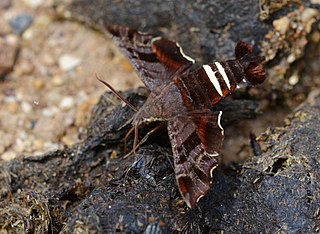
Amphion floridensis, the Nessus sphinx, is a day-flying moth of the family Sphingidae. The species was described by Pieter Cramer in 1777, and renamed in 1920. It is the only member of the genus Amphion erected by Jacob Hübner in 1819. It lives throughout the eastern United States and Canada and occasionally south into Mexico, and is one of the more commonly encountered day-flying moths in the region, easily recognized by the two bright-yellow bands across the abdomen.

Proserpinus lucidus, the Pacific green sphinx or bear sphinx, is a moth of the family Sphingidae first described by Jean Baptiste Boisduval in 1852.

Deidamia inscriptum, the lettered sphinx, is a species of moth of the family Sphingidae. It is the only member of the genus Deidamia. The species was first described by Thaddeus William Harris in 1839 and the genus was erected by James Brackenridge Clemens in 1859.

Sphinx kalmiae, the laurel sphinx, is a moth of the family Sphingidae.
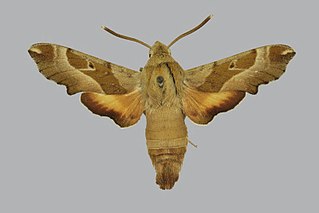
Proserpinus gaurae, the proud sphinx moth, is a moth of the family Sphingidae. The species was first described by James Edward Smith in 1797. It is found from Texas and Louisiana east to northern Florida, north to Alabama, Missouri, northern Georgia and South Carolina. It may range as far south as northern Mexico.

Eupyrrhoglossum sagra, the Cuban sphinx, is a moth of the family Sphingidae. The species was first described by Felipe Poey in 1832. It is known from tropical and subtropical lowlands in Cuba and from Mexico and Belize to Guatemala, Costa Rica, Bolivia, Paraguay, Argentina and Uruguay. Occasionally, strays are found in Florida.























